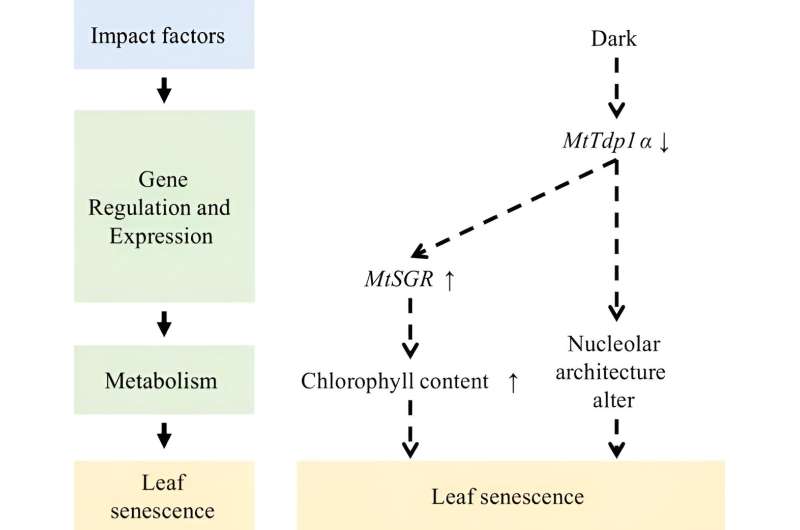This article has been reviewed according to Science X's editorial process and policies. Editors have highlighted the following attributes while ensuring the content's credibility:
fact-checked
proofread
Enhancing grassland sustainability: Strategies to delay leaf senescence in forage and turf grasses

Leaf aging is a complex biological phenomenon influenced by growth stages, plant hormones, and various environmental conditions. In the context of forage and turf grasses, managing leaf aging can significantly enhance the quality of forage, improve the aesthetic and functional value of lawns and turfs, and increase the resistance of grasses to stress.
Leaf senescence is a process characterized by extensive changes in gene regulation and metabolism, including shifts in chlorophyll breakdown. Thoroughly studying the molecular mechanisms involved in leaf aging is of great significance for improving the comfort of lawns, grass yield, and raw material quality.
Researchers writing in Grass Research have published an article titled "Leaf senescence in forage and turf grass: progress and prospects." This paper highlights recent advancements in research on leaf aging across key forage and turf grass varieties, aiming to shed light on developing effective strategies to slow down leaf aging in these grass species.
In this review, authors explore the crucial role of regulating leaf senescence in enhancing biomass yield and quality for forage and turf grass species, along with improving the aesthetics and functionality of lawns and turfs.
Leaf senescence, the final stage of leaf development, is characterized by the breakdown of chlorophyll, carbohydrates, proteins, and nucleic acids, facilitating the reallocation of nutrients to new growth. This process is significantly influenced by both internal and environmental factors, including plant age, hormones, light, and stress from drought, salinity, pathogens, and herbivory. The dynamic and complex nature of leaf senescence, highlighted by changes in leaf color and cellular structure, underscores its importance in plant life cycles and agricultural productivity.
The review delves into the molecular genetics underpinning leaf senescence, focusing on chromatin remodeling, DNA transcription, and various post-transcriptional modifications that govern the expression of senescence-associated genes (SAGs).
Special emphasis is placed on external factors that affect the aging of grass leaves, such as light conditions, atmospheric pollution, elevated CO2 levels, temperature, soil water content, saline-alkali and toxic metals, fungi, bacteria, and management practices like fertilization and mowing. These factors collectively impact the progression of leaf senescence, ultimately affecting plant growth, yield, and quality.
Highlighted studies on key grass species such as Medicago truncatula, alfalfa, perennial ryegrass, switchgrass, and creeping bentgrass reveal significant genetic insights and potential strategies to delay leaf senescence. Multiple stay-green genotypes have been identified and incorporated into breeding plans to minimize yield loss in plants grown under adverse environmental conditions.
The review also highlights the importance of further research to elucidate the specific mechanisms of leaf senescence in forage and turf grasses and to develop effective methods for its delay. The application of CRISPR gene-editing technology and the identification of key regulatory genes offer promising prospects for breeding programs aimed at achieving higher quality, yield, and stress tolerance in these grass species.
Overall, this review underscores the complexity of leaf senescence, its impact on plant productivity and aesthetics, and the potential of genetic research to enhance the sustainability and performance of forage and turf grasses.
More information: Kangning Zhang et al, Leaf senescence in forage and turf grass: progress and prospects, Grass Research (2024). DOI: 10.48130/grares-0024-0002
Provided by Maximum Academic Press





















